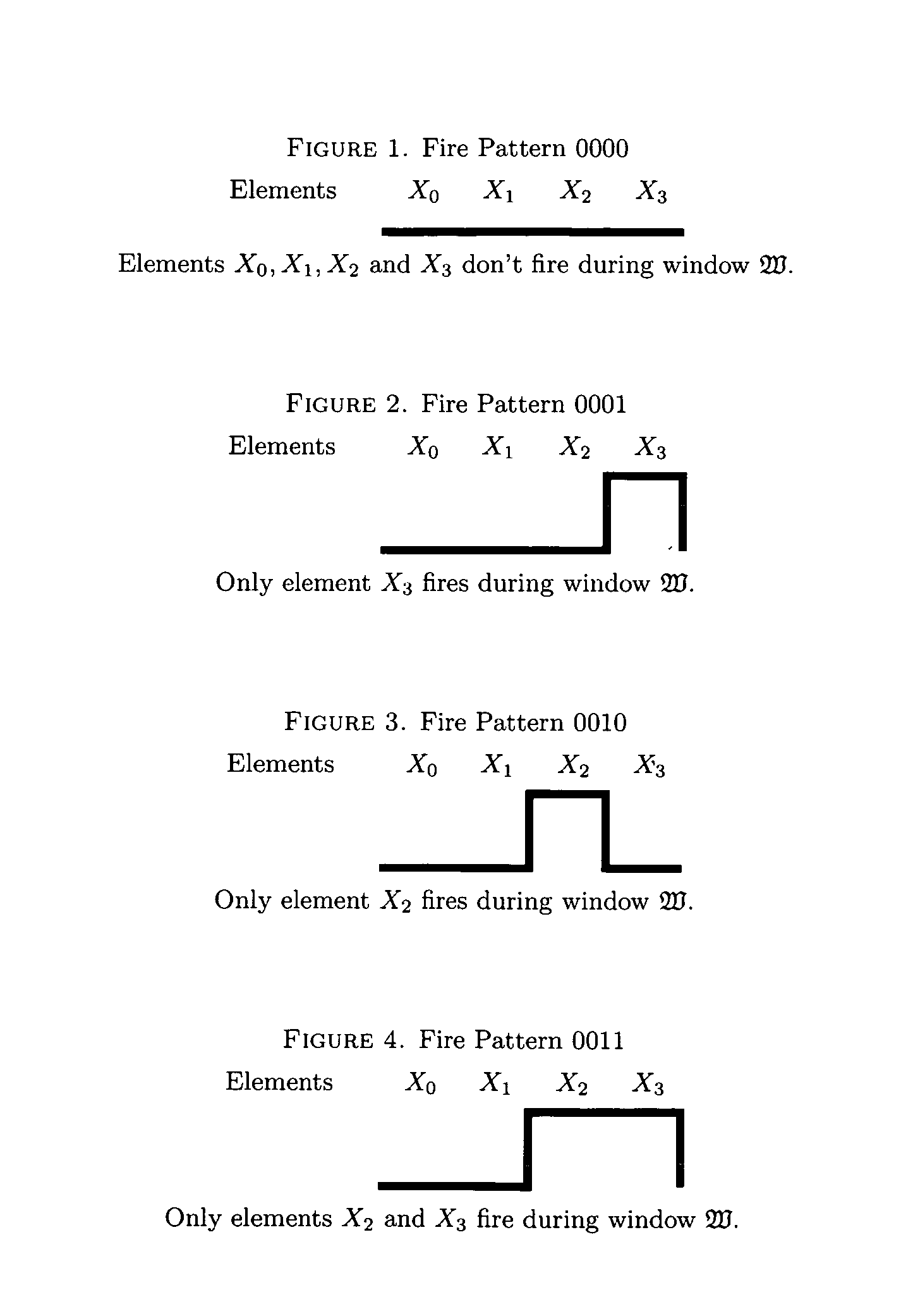Secure active element machine
a technology of active elements and machines, applied in the field of computing, can solve the problems of malware hijacking, difficult apprehending of adversaries, and prior art failure to secure computers, networks and the internet,
- Summary
- Abstract
- Description
- Claims
- Application Information
AI Technical Summary
Benefits of technology
Problems solved by technology
Method used
Image
Examples
case 1
[0278] Element A fires at time t=0 and element B doesn't fire at t=0.
[0279]Element X0 receives a pulse from A with amplitude 2 at time t=2. Element X0 doesn't fire because its threshold=3. Element X1 receives a pulse from A with amplitude −2 at time t=2. Element X1 doesn't fire during W because X1 has threshold=−1. Element X2 receives a pulse from A with amplitude 2. Element X2 fires at time t=2 because its threshold is 1. Element X3 receives a pulse from A with amplitude 2 but doesn't fire during window W because X3 has threshold=3.
case 2
[0280] Element X0 receives a pulse from B with amplitude 2 at time t=2.
[0281]Element X0 doesn't fire because its threshold=3. Element X1 receives a pulse from B with amplitude −2 at time t=2. Element X1 doesn't fire during W because X1 has threshold=−1. Element X2 receives a pulse from B with amplitude 2. Element X2 fires at time t=2 because its threshold is 1. Element X3 receives a pulse from B with amplitude 2, but doesn't fire during window W because X3 has threshold=3.
case 3
[0282] Element A fires at time t=0 and element B fires at t=0.
[0283]Element X0 receives two pulses from A and B each with amplitude 2 at time t=2. Element X0 fires because its threshold=3. Element X1 receives two pulses from A and B each with amplitude −2 at time t=2. Element X1 doesn't fire during W because X1 has threshold=−1. Element X2 receives two pulses from A and B each with amplitude 2. Element X2 fires at time t=2 because its threshold is 1. Element X3 receives two pulses from A and B each with amplitude 2. Element X3 fires at time t=2 because X3 has threshold=3.
PUM
 Login to View More
Login to View More Abstract
Description
Claims
Application Information
 Login to View More
Login to View More - R&D
- Intellectual Property
- Life Sciences
- Materials
- Tech Scout
- Unparalleled Data Quality
- Higher Quality Content
- 60% Fewer Hallucinations
Browse by: Latest US Patents, China's latest patents, Technical Efficacy Thesaurus, Application Domain, Technology Topic, Popular Technical Reports.
© 2025 PatSnap. All rights reserved.Legal|Privacy policy|Modern Slavery Act Transparency Statement|Sitemap|About US| Contact US: help@patsnap.com



